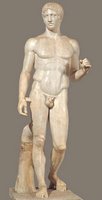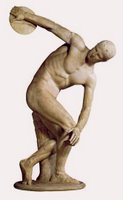Here are some notable quotes in the article from the critics. I agree 100%.
The critics on Kinkade
"A Kinkade painting was typically rendered in slightly surreal pastels. It typically featured a cottage or a house of such insistent cosiness as to seem actually sinister, suggestive of a trap designed to attract Hansel and Gretel. Every window was lit, to lurid effect, as if the interior of the structure might be on fire. The cottages had thatched roofs, and resembled gingerbread houses. The houses were Victorian and resembled idealised bed-and-breakfasts ... "
Joan Didion
"[One painting] features mountains and quiet shadows and the purple cloak of sunset, but it could just as easily have featured a lavishly blooming garden at twilight, or maybe a babbling brook spanned by a quaint stone bridge, or a lighthouse after a storm; it's hard to distinguish one Kinkade from the next because their effect is so unvarying - smooth and warm and romantic, not quite fantastical but not quite real, more of a wishful and inaccurate rendering of what the world looks like, as if painted by someone who hadn't been outside in a long time."
Susan Orlean, the New Yorker
"There's always been starter art, but Kinkade is the lowest form of starter art I've ever seen."
San Francisco gallery owner
_____________________________________________________________
What I find most entertaining about Kinkade is his insane ego. These quotes are quite revelatory:
-- "He denied the harassment allegation, but said in a deposition: "You've got to remember, I'm the idol to these women who were there. They sell my work every day, you know. They're enamoured with any attention I would give them. I don't know what kind of flirting they were trying to do with me. I don't recall what was going on that night."
In his email he said that long after "this absurd negativity" had subsided, "I will still be here, sitting in front of my easel, trying my best to share the light."
-- "The No 1 quote critics give me is, 'Thom, your work is irrelevant.' Now, that's a fascinating, fascinating comment. Yes, irrelevant to the little subculture, this microculture, of modern art. But here's the point: My art is relevant because it's relevant to 10 million people. That makes me the most relevant artist in this culture."
Hey Thom, I have a newsflash for you. Modern art is not a subculture NOR a microculture, that is, unless your ego is astronomically big enough to transcend the present time and space and the world revolves around you. Modern art began with Manet (middle of the 1860s), and incidentally, we've been in the Postmodern Art age for almost 40 years now. You might want to catch up. You sell sentimentality and manipulate with false comfort. Art isn't art because it's popular. Art is art because it's significantly reveals the depths of the people of a culture of a specific time and place. People love Precious Moments figurines, Beanie Babies, and paintings-by-numbers, but that doesn't make those things art.





















